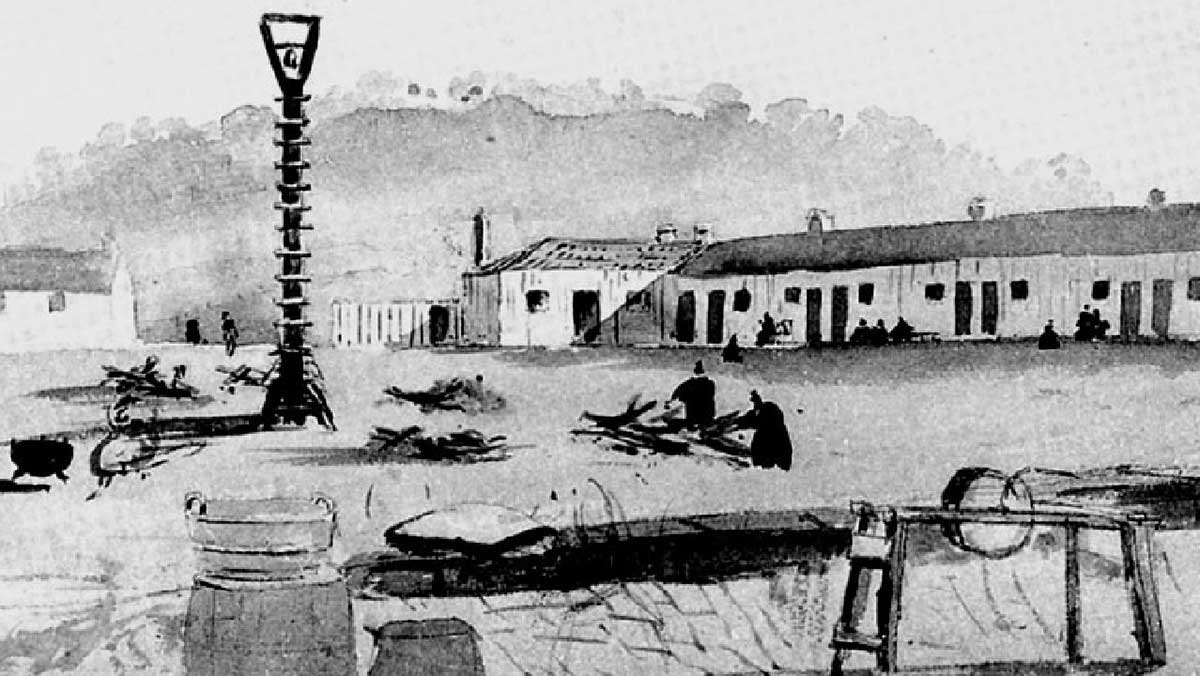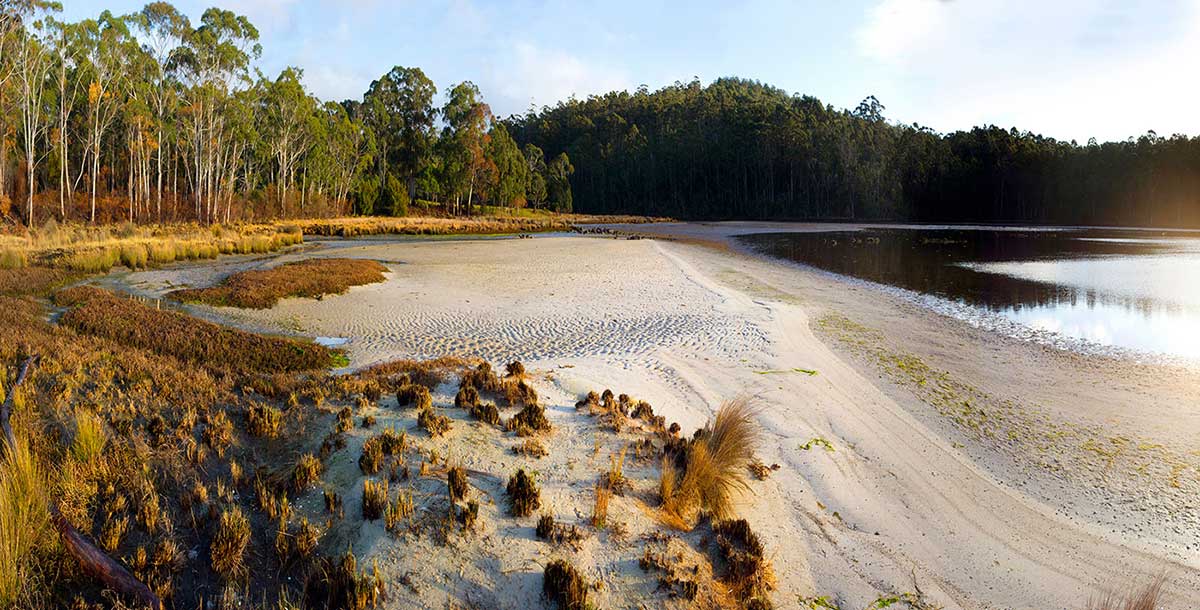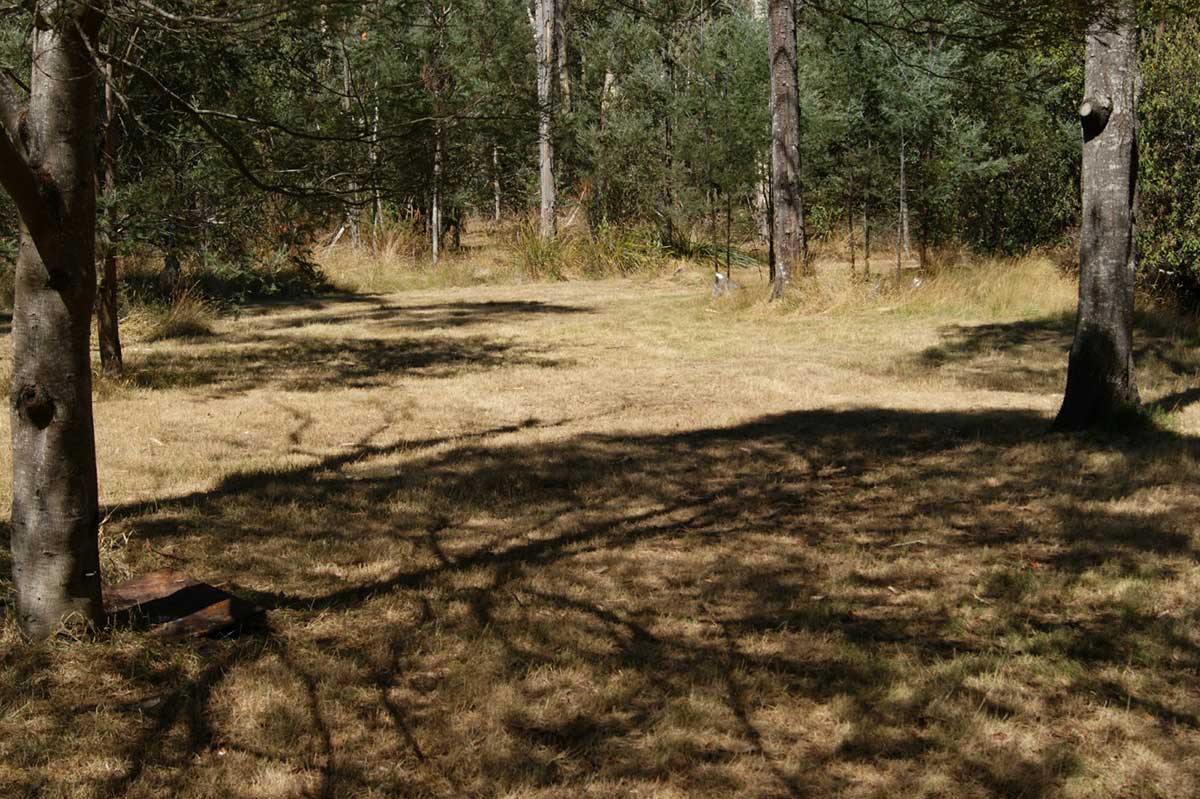Oyster Cove Probation Station, Kettering

Oyster Cove Probation Station – Operated 1839 - 1846
Oyster Cove/ Putalina is south of Hobart, adjacent to a small bay on the D’Entrecasteaux Channel. In 1844, it was chosen as a site for a female penitentiary that never eventuated. Approximately 120 male convicts were sent there to construct buildings and perform labour. When reporting on Oyster Cove to the Secretary of State for the Colonies in May 1847, Lieutenant Governor Charles La Trobe informed Grey that the decision had been made to ‘break up the establishment’, which had become ‘expensive and unprofitable’.
The government sold the vacant land and buildings to Henry Stevenson Hurst for approximately £200. Just months later, when a site was being sought to which Tasmanian Aboriginal people at Wybalenna might be relocated, the government settled on Oyster Cove. The buildings, which La Trobe had described as ‘small ... and very slight’, remained intact. Aside from the superintendent’s quarters, which were constructed of brick, the built environment was fashioned from sawn timber or slabs and comprised of two mess rooms (one of which also served as a chapel), some huts, a cooking and bake house, hospital and a dozen wooden cells formerly used for solitary confinement.

Pulitana waterfront
Hurst had the upper hand in the negotiations over Oyster Cove, making a handsome profit when, just months after the government had sold him the site, Hurst sold it back for £400. In the same public notice in which the government formally announced the return of 45 ‘Aboriginal inhabitants of Van Diemen’s Land to their native country’, it reassured readers that only 13 adult men were among the group; of these, two had been brought up by Europeans from early childhood, three had been educated at the Queen’s Orphan Schools, one was a farm servant who had been reared by a European and two were incapacitated. The remaining five adult males included four older men who worked with a ‘steadiness which would have been praiseworthy in a man bred to labour’.
At that time, these Aboriginal people were living at the Government settlement called Wybalenna on Flinders Island, and were all that were left of the Aboriginals rounded up and relocated there in the aftermath of the "Black Wars". Wybalenna was closed by Governor Denison in October 1847, when the Tasmanian Aboriginal people were removed to Putalina. The arrivals consisted of 5 boys, 5 girls, 23 women and 14 men, all who remained of some 200 Tasmanian Aboriginal people who had been compulsorily and officially removed from across Tasmania.
Conforming to a pattern established across other British settler colonies, and at Flinders Island, the children were separated from their parents and inculcated with ‘those habits of obedience and industry which will ensure their becoming at all events quiet and orderly members of the community’. The transition from Indigenous mobility to more ‘settled’ lives was seen as an essential precursor to Aboriginal people becoming ‘civilised’. Seven children were removed from their families and placed in the Queen’s Orphan School in New Town at the end of the year. This included Mathinna, who had previously lived with Governor John and Lady Franklin.
The children were accompanied on their one-way journey by their parents. They stopped en route to join the Gov. and Lady Denison at New Norfolk for their Christmas festivities. Lady Denison empathised with her husband’s plans to ‘bring parties of them [the Aboriginal people] up to Hobart Town and the neighbourhood, in order to let people see how perfectly inoffensive they are’ and expressed her hopes for the children to be ‘trained into civilised and Christian beings’.

Pulitana settlement site today
As had been the case at Wybalenna, white protectors were the cornerstone of the colonial policy of containment that sought to constrain Aboriginal mobility and to re-fashion Tasmania’s Indigenous people (particularly the children) in the image of the British colonisers. Dr Joseph Milligan was putatively in charge of the station at Oyster Cove, yet he opted to live in Hobart. Daily responsibility for overseeing the station’s residents fell to the catechist, Robert Clark, who, like Milligan, had accompanied the Aboriginal group from Wybalenna. The government also appointed James Woodhouse Kirwan as the visiting magistrate to the station.
The Oyster Cove population was encouraged to return to practicing their 'indigenous' activities included general hunting and food gathering, traditional medicinal practices. They also involved themseves in diving on wrecks to procure lost goods for payment, fishing, shell necklace making and fibre practices, gardening, collecting firewood, frequenting local taverns, tending their thirty dogs, being constantly visited by outsiders and occasionally attending events in Hobart town.
When Lady Denison visited Oyster Cover Station, she described the repatriated Aboriginal people's conduct as ‘usual’ as ‘apathetic’. They only became energetic after they were asked to demonstrate their traditional skills in tree climbing. The burden of continued captivity appeared to be weighing heavily on them. Nearly a quarter of them died during the station’s first three years of operation. Adverse reports about the lives and living conditions of Oyster Cove residents resulted in the governor appointing a new superintendent, John Strange Dandridge. Dandridge took up residence in July 1855 and spent the rest of his life there.
The Aboriginal residents at Oyster Cove experienced a severe population decline in the 1860s. During this time, the Tasmanian Government regularly displayed them in Hobart. This was consistent with its earlier practice of allowing controlled Aboriginal mobility to show colonists that Aboriginal Tasmanians were not a threat, while also providing a spectacle. In colonial Tasmania, the potentially unrestrained mobility of Aboriginal people had incited fear and unrest among the predominantly white settler population. Such fears were not altogether misplaced, and stand as testament to the effectiveness of the campaigns waged by Aboriginal warriors following the incursion onto their ancestral lands of white settlers and their sheep.
Oyster Cove was occupied by Aboriginal people until it succumbed to heavy flooding in the winter of 1874, when the site was then abandoned. From this time, Truganini, a woman widely considered to be the last "full blood" Palawa (Tasmanian Aborigine), lived with the Station Superintendent and Mrs. Dandridge in Hobart until she died in 1876. The surgeon, William Crowther, infamously raided the graves at Putalina and removed skeletal remains of many Aboriginal people.
In 1981, the state government proclaimed 30.3 hectares of the Oyster Cove Station an historic site. In 1984 the Tasmanian Aboriginal Centre occupied Oyster Cove and claimed land rights for the site. After several attempts, in 1995, 10 hectares at Oyster Cove were among the 3800 hectares transferred to the Tasmanian Aboriginal people.
Aboriginal Containment at Oyster Cove
About Truganini
